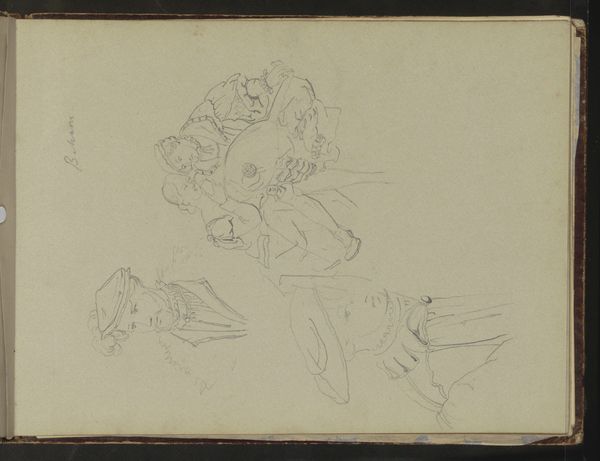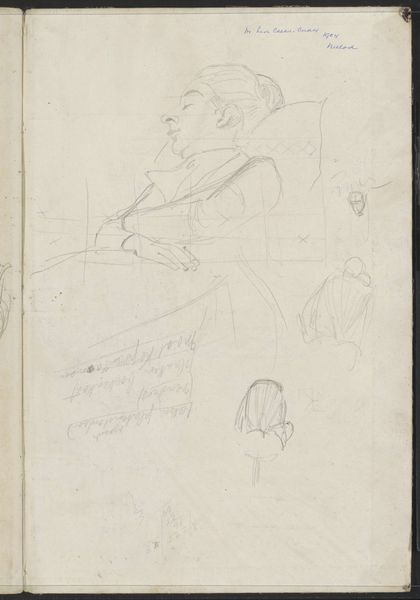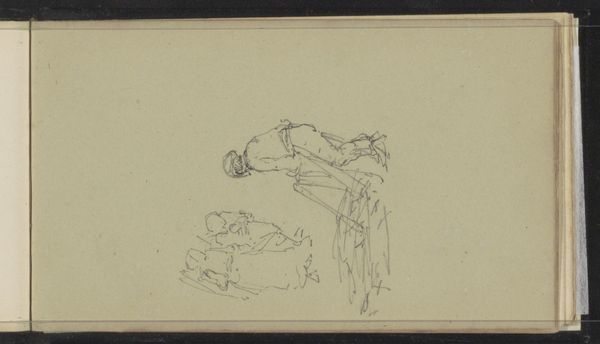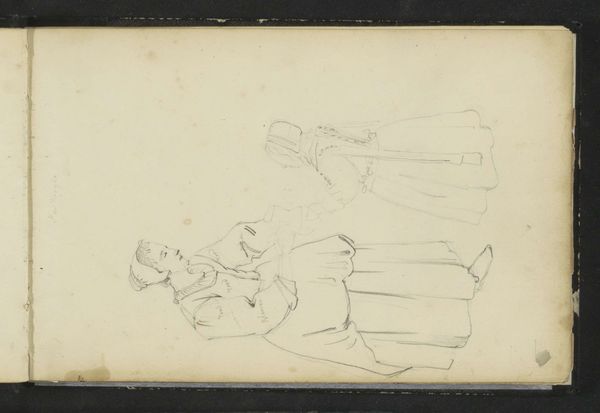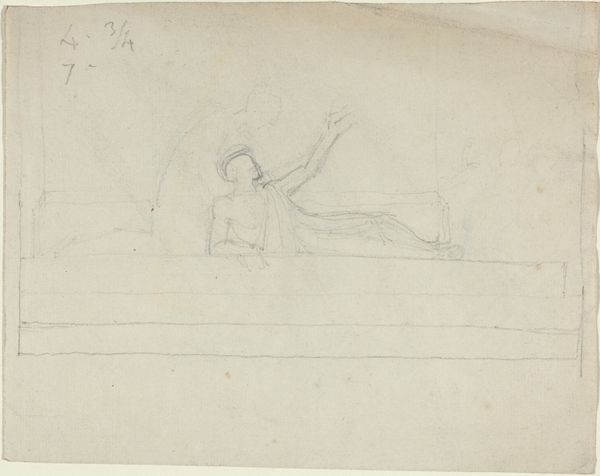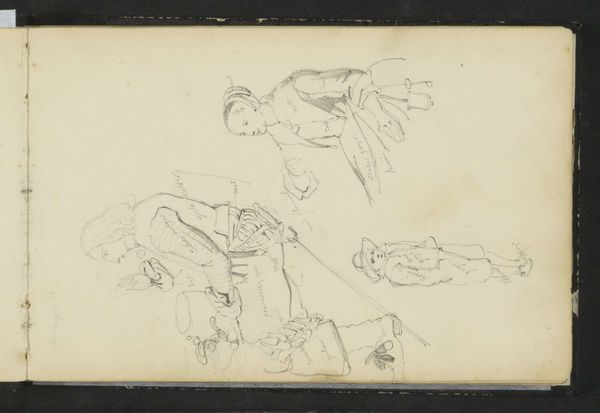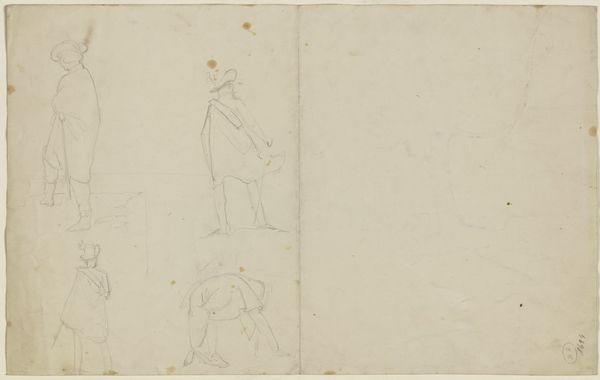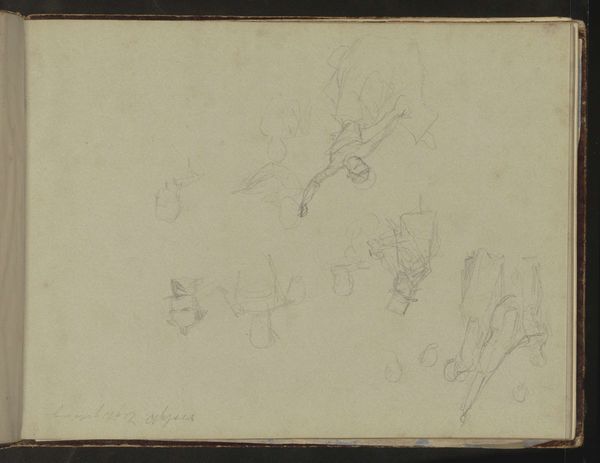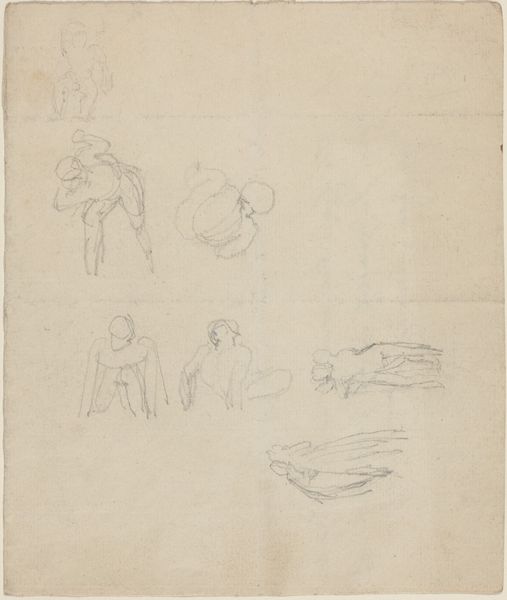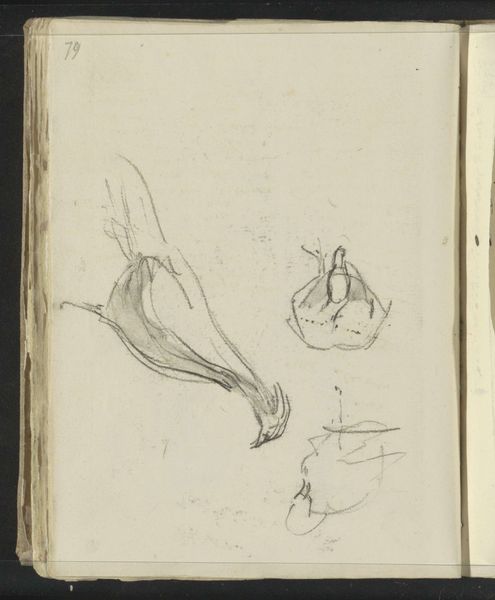
drawing, paper, pencil
#
portrait
#
drawing
#
figuration
#
paper
#
pencil
#
genre-painting
Copyright: Rijks Museum: Open Domain
Editor: This drawing, Figuren, waaronder een boerin, which translates to Figures, including a farmer’s wife, is attributed to Reinier Craeyvanger and dates somewhere between 1822 and 1880. It’s a pencil drawing on paper, currently held at the Rijksmuseum. It gives the impression of being a casual study, figures sketched loosely across the page. What can you tell me about it? Curator: It’s interesting that you see it as casual. Considering the period and the likely market for such drawings, do you think it was intended as purely preparatory, or could there be a more public-facing intent? The figures, especially the peasant woman, engage with then-current Romantic notions of rural life. Think of it within the context of a rising bourgeois class eager to consume images of picturesque, idealized peasantry. Editor: That's a really interesting angle. I was so focused on the sketch-like quality, I hadn’t really considered who this was *for.* So, this might be less about capturing reality and more about constructing an appealing image for urban audiences? Curator: Exactly. Ask yourself: what are the socio-political implications of presenting a 'boerin' in this manner? Is it an honest portrayal, or a carefully curated image designed to reinforce certain ideas about rural society and class structures? Think about the role the museum itself plays in shaping our understanding of such images, decades later. Editor: That shifts my whole perspective. I initially saw it as a simple study, but now I’m seeing the potential for it to reinforce certain power dynamics, even if unintentionally. Curator: Precisely. The museum context further complicates that; these figures aren't simply 'there', they are actively being presented as significant. Thinking critically about that presentation, who it serves, and what narratives it perpetuates, is key. Editor: So, the image itself is only part of the story; we also need to consider the social forces at play when it was created, and how they continue to shape our interpretations today. Curator: Absolutely. And how the act of displaying it in a museum changes its role, as well.
Comments
No comments
Be the first to comment and join the conversation on the ultimate creative platform.
